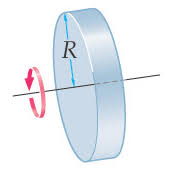What is Inertia and how to Calculate it ?
Inertia is the property of matter that causes it to resist changes in its velocity. This includes changes to the object’s speed or direction of motion. Inertia is directly related to mass, the greater the mass, the greater the inertia.
In simple terms: “An object in motion stays in motion, and an object at rest stays at rest unless acted upon by an external force.” (Newton’s First Law of Motion)
Understanding inertia is essential in many areas of engineering such as mechanical, structural, aerospace, and robotic engineering, influencing the design of systems for stability, efficiency, energy storage, and dynamic control. Engineers use inertia principles to optimize performance, minimize vibration, and ensure safety in moving systems.
Types of Inertia
Inertia of Rest: Resistance to starting motion.
Inertia of Motion: Resistance to stopping or changing motion.
Inertia of Direction: Resistance to changing direction.
How to Calculate Inertia
There are two key contexts:
Linear Inertia (Mass)
For linear motion, inertia is simply the mass of the object.
Inertia linear = M
Where: M = mass of the object (in kilograms)
Example

You have a cart with a mass of 10 kg. What is its inertia?
For linear motion, inertia is equal to mass.
Inertia = M = 10 kg
So, the cart has 10 kg of inertia—this means it resists changes to its motion with the same “effort” as a 10 kg object.
Rotational Inertia (Moment of Inertia)
In rotational motion, inertia is quantified as the moment of inertia I, which depends on the mass distribution relative to the axis of rotation.
I = ∑MiRi2
Or for continuous bodies:
I = ∫ R2 dm
Where:
I = moment of inertia
Mi = mass of each particle
Ri = distance from the axis of rotation
Example

A solid disc of mass 5 kg and radius 0.4 meters is rotating about its central axis. What is its moment of inertia?
Use the formula for a solid disc:
I = ½ MR2
Where:
M = 5 kg
R = 0.4 m
I = ½ × 5 × 0.16
I = 12 × 0.8 = 0.4 kg⋅m2
So, the moment of inertia is 0.4 kg·m².
Interested in our engineering courses?
We have over 70 courses across all major engineering disciplines, including, mechanical, electrical and electronic, civil, aerospace, industrial, computer and general engineering. Visit our course catalogue for a complete list of fully accredited engineering programmes.
A small selection of short courses …
Diploma in Mechanical Engineering
Diploma in Structural Engineering
Level 6 Courses
International Graduate Diploma in Mechanical Engineering
International Graduate Diploma in Civil Engineering
International Graduate Diploma in Aerospace Engineering
Level 5 Courses
Higher International Diploma in Mechanical Engineering
Higher International Diploma in Civil Engineering
Higher International Diploma in Aerospace Engineering
Level 4 Courses
Higher International Certificate in Mechanical Engineering
Higher International Certificate in Civil Engineering
Higher International Certificate in Aerospace Engineering
Alternatively, you can view all our online engineering courses here.
Recent Posts
Understanding and Calculating Generator Efficiency and Output Parameters
Understanding and Calculating Generator Efficiency and Output Parameters Introduction The performance of a generator is often judged by how efficiently it converts mechanical energy into electrical energy. Understanding and calculating this efficiency, along with other key output parameters such as voltage, current, power factor, and load, is essential for evaluating performance and ensuring reliable operation. […]
Essential Cooling and Protection Devices: How They Work and Why They Matter
Essential Cooling and Protection Devices: How They Work and Why They Matter Introduction Generators produce a significant amount of heat and electrical stress during operation, which can affect performance and lifespan if not properly managed. That’s where cooling and protection devices come in. These essential systems, including fans, radiators, circuit breakers, and relays, work together […]
Justifying the Choice of Generators Based on Requirements and Characteristics
Justifying the Choice of Generators Based on Requirements and Characteristics Introduction Selecting the right generator isn’t just about power output, it’s about finding a machine that meets specific operational needs, efficiency goals, and environmental conditions. Different applications demand different generator types, capacities, and features. In this article, we’ll explore how to justify the choice of […]

